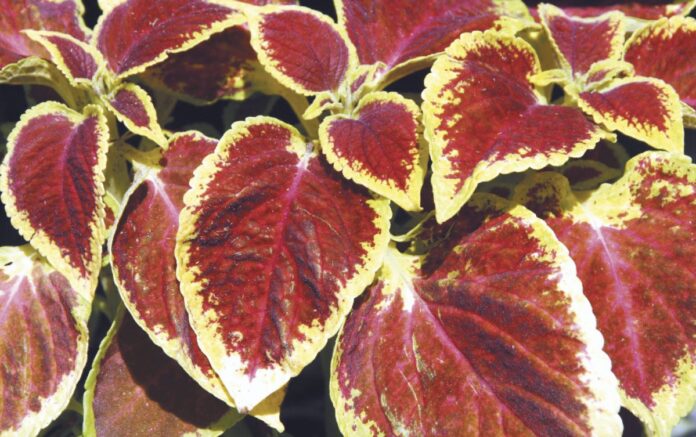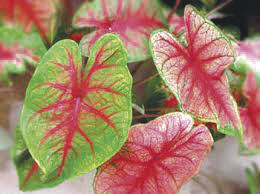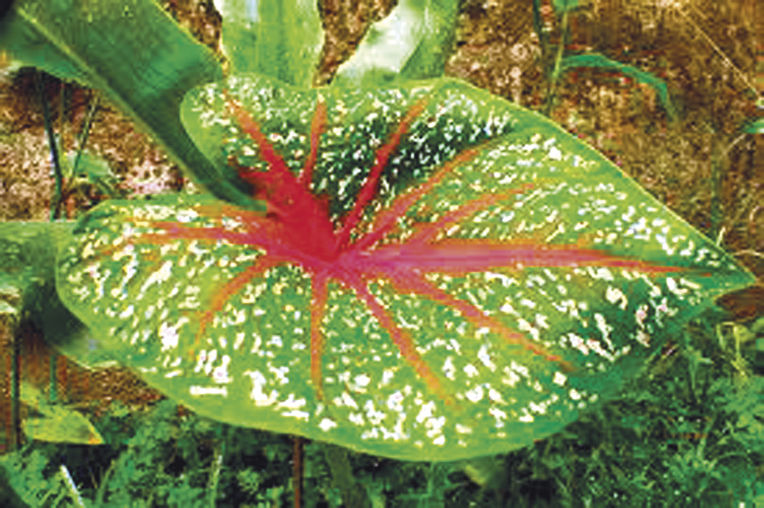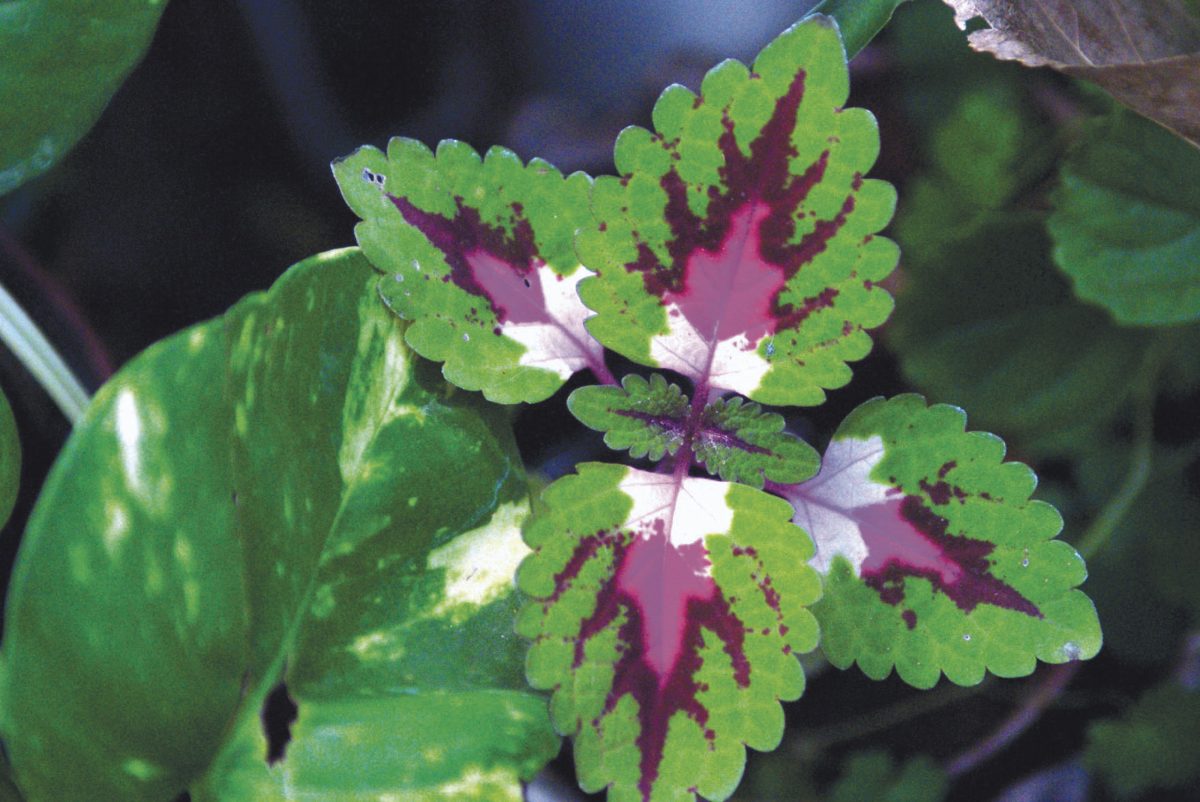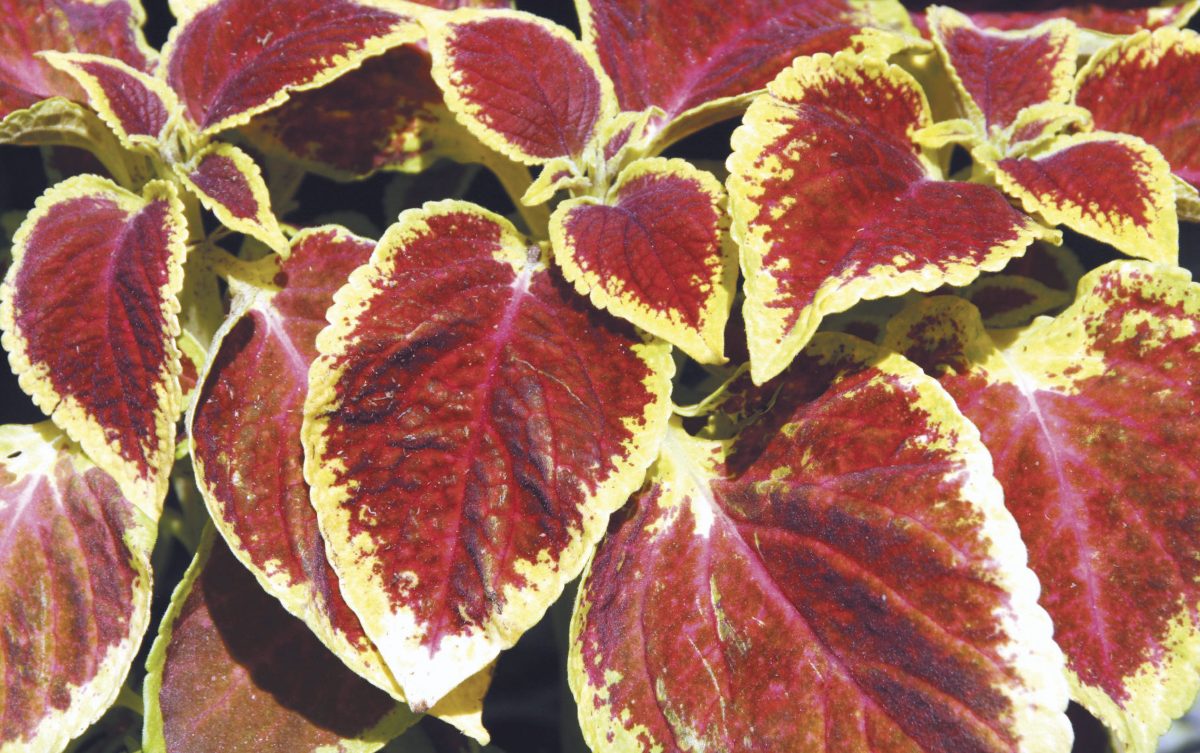BY EDITED Lori Murray , Texas Superstar Specialist
Since many areas that were originally covered with native trees have been cleared for farmland in the past 50 to 70 years, new homes are built on sunny, treeless lots. But once trees grow and provide cooling shade, gardeners are faced with a new challenge: gardening with shade because many of the plants which grow and provide bright color in sunny areas either stop blooming or die when the area becomes shady. Although many gardeners feel that shady areas limit them to growing only green foliage plants such as ferns and ivy, there are exciting possibilities for adding color to a shady region in your garden. Two of the most beautiful plants for shady areas generally available at your local nursery are caladium and coleus.
Caladium. The fancy-leafed caladium does produce an insignificant flower, but it’s grown for its beautiful, lush, arrow-shaped leaves. There are countless variations of colors and patterns which make caladium perfect companions to ferns, monkey grass, ivy, begonias or simply as a mixture of caladium itself. Caladium grow about a foot tall, with graceful, almost translucent leaves which can get to be a foot wide, colored in bands and splashes of red, rose, pink, white, silver and bronze. Caladium require shade, warm temperatures, and a rich, moist soil, containing manure or a lot of organic matter. Under these conditions they will yield big beautiful leaves.
When planting caladium tubers remove the biggest “eye“ or bud on the tuber. With a sharp knife tip cut out a cone-shaped section around this eye, about 1/4 inch deep. This will force the smaller eye to grow and thus produce a fuller, more lush clump of leaves. Caladium should be planted only after the temperatures are reliably over 72 degrees F at night, since they need warm soil to sprout and grow. Plant the tubers 1 to 2 inches deep, and water them well. It doesn’t matter if they are right -side-up or not, as they will grow just fine either way. In about two to four weeks, depending on soil temperatures, you will have wonderful caladium leaves coloring your shady area.
As the caladium grows, keep it well-watered but not soggy, and give it occasional applications of well-composted manure (their favorite food) available at your local nursery. Keep the blooms pinched off to encourage bushier plants. When cool weather arrives, cut off all the leaves and stems from the tubers, dig and store in a cool dry place, then next year set them out again when the weather warms up, for a delightful cascade of cooling color in your shade garden .
Coleus. Coleus is a hybrid plant native to Java and the Philippines that offers an astounding diversity of different colors and shapes on its brightly-colored foliage. Coleus is actually a perennial (meaning it grows and flowers year after year) but since it can be damaged by the lightest of frosts, it is best to grow it as a summer annual. The leaves of this shade-loving plant may be velvety or crinkled, deeply-notched or round and full. They can be a wonderful array of colors, both singly and in combinations, of red, magenta, orange, yellow, maroon, purple, brown, chartreuse, and green. Coleus can be grown from seeds or cuttings, but it is fastest and easiest to start them as small transplants from the nursery. Select an area in your shade garden with either light or deep shade; but keep in mind that the leaf colors will be at their best in a cool, well-shaded area. Prior to planting work plenty of peat moss and manure into the soil, and be sure that the drainage is good.
Coleus should be planted from 6 to 18 inches apart, and will grow anywhere from 6 to 36 inches tall, depending on the variety. Occasionally pinch back your plants to keep them from getting leggy. The newer varieties may not need to be pinched back as much, but be sure to keep the small lavender flower spikes pinched out to preserve the plant’s energy to grow new leaves. To encourage foliage production, feed these plants regularly with a high-nitrogen fertilizer.
Grow coleus in beds, hanging baskets, planter boxes, alone or with ferns or begonias, and the bright array of coleus leaves will be delightful all summer long.
(Information source: This article was written in 2008 by the Cameron County. Their information source was Cecile Waugh of Waugh’s Nursery, McAllen, TX.)

